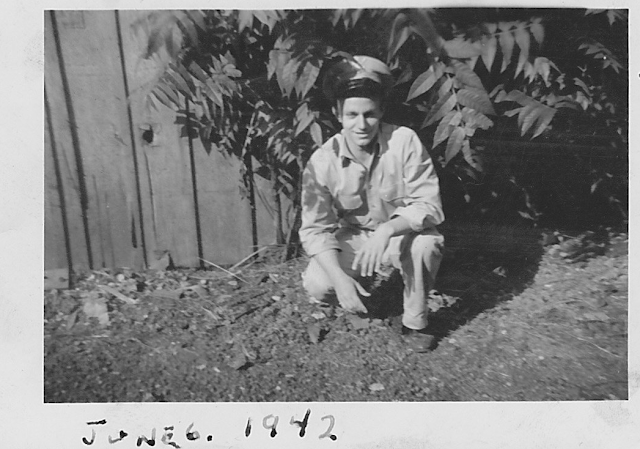Camp Miles Standish closed the year of Alveda and Ziggy's marriage: 1946.
It was decommissioned January 11th and it closed in one day.
All of the civilian workers were laid off in that one day.
There was a brief span of time when Taunton officials tried to get the Camp
to be the location of the newly founded United Nations.
There was a brief span of time when Taunton officials tried to get the Camp
to be the location of the newly founded United Nations.
That, as we know, did not work out.
The over a million and a half service American and Allied men and women passing
through the Camp were from :
17th Field Artillery Brigade
20th Fighter Groud
26th Infantry Division
29th Transport Squadron
34th Tank Battalion
372nd Military Police Company
395th Infantry Regiment
452d Bombardment Squadron (medium)
361st Fighter Squadron
49th Troop Carrier Squadron
501st Infantry Regiment
555th Signal Aircraft
57th Fighter Group
5th Ranger Battalion
68th Armor Regiment
70th Infantry Division
95th Infantry Division
99th Bombardment Wing
III Corps
30th Cavalry Reconnaissance Troop
167th Engineer Combat Battalion
To memorialize those from Taunton who made the ultimate sacrifice in the war an Honor Roll was placed was erected and for years had pride of place on Taunton Green. The dedication was photographed by Alveda and here is that photograph.... date unknown. That little boy looks familiar.....
For $1 in 1953, the state purchased the Camp, and on Oct. 26th of that year, former presidential candidate and Governor of Illinois, Adlai Stevenson, with other dignitaries
and Governor Paul Dever of Massachusetts presided at the dedication of
and Governor Paul Dever of Massachusetts presided at the dedication of
The Paul Dever School for Disabled Youth. A crowd of over 5,000 was present.
The School was built at a cost of $10, 200,000.
Humphrey Bogart and Lauren Becall were also present, remembers one of our readers who was there.
In 2002 due to changes in state policies, Paul Dever was finally closed and now its shuttered remains have joined those left by the Camp.
The School was built at a cost of $10, 200,000.
Humphrey Bogart and Lauren Becall were also present, remembers one of our readers who was there.
In 2002 due to changes in state policies, Paul Dever was finally closed and now its shuttered remains have joined those left by the Camp.
In 1973, the City of Taunton purchased 700 acres of the old Camp area to establish
the Miles Standish Industrial Park.
the Miles Standish Industrial Park.
.......
Acknowledgements: Sources:
*Wikopedia: Camp Miles Standish
*Archives of Alveda and Zigmund Napieralski as shared by their daughter Shelley Au
*70th Infantry Division Association website: History and Remembrances of
*Jim Koller- Remembrances of Camp Miles Standish- 64 Years Later
http://www.trailblazersww2.org/units_276_accounts_jkoller2.htm
http://www.trailblazersww2.org/units_276_accounts_jkoller2.htm
*Archives: Taunton Daily Gazette online:
http://www.tauntongazette.com/news/x872933419/PRISONERS-IN-TAUNTON-Dr-Hanna-to-tell-story-of-WWII-POWs-at-Camp-Myles-Standish
http://www.tauntongazette.com/news/x1831798596/Overflow-crowd-turns-out-to-hear-history-of-Camp-Myles-Standish
History Of Camp Miles Standish and Prisoner of War Experience 1943-1946 review
of presentation by Dr. William Hanna, Taunton Historian and author History of Taunton.
Many of Dr. Hanna's quotes were used in these posts.
*The Taunton Public Library, Reference Department.
....................
http://www.tauntongazette.com/news/x872933419/PRISONERS-IN-TAUNTON-Dr-Hanna-to-tell-story-of-WWII-POWs-at-Camp-Myles-Standish
http://www.tauntongazette.com/news/x1831798596/Overflow-crowd-turns-out-to-hear-history-of-Camp-Myles-Standish
History Of Camp Miles Standish and Prisoner of War Experience 1943-1946 review
of presentation by Dr. William Hanna, Taunton Historian and author History of Taunton.
Many of Dr. Hanna's quotes were used in these posts.
*The Taunton Public Library, Reference Department.
....................
Coming: interim posts as I prepare for the telling of The Origins of the people of the Village.
Welcome to any and all who wish to help with their family history in this regard,



























